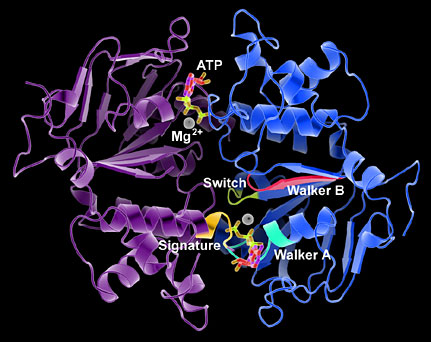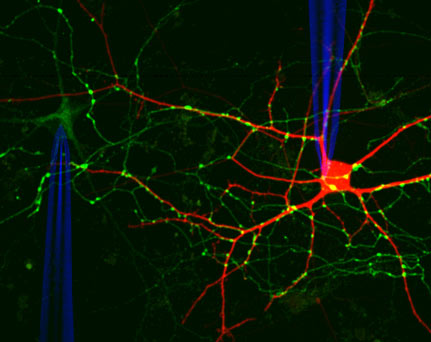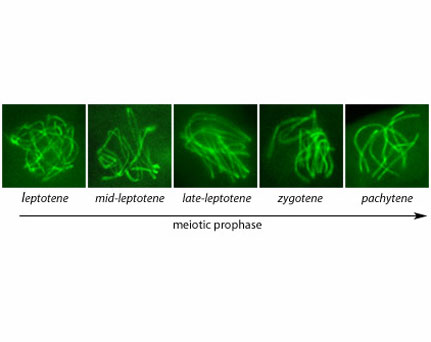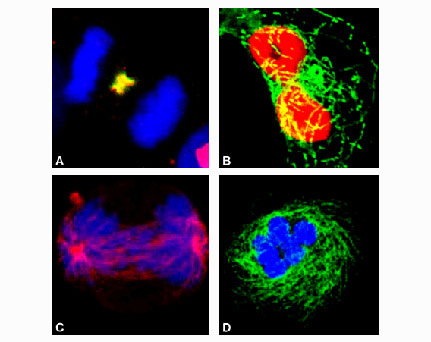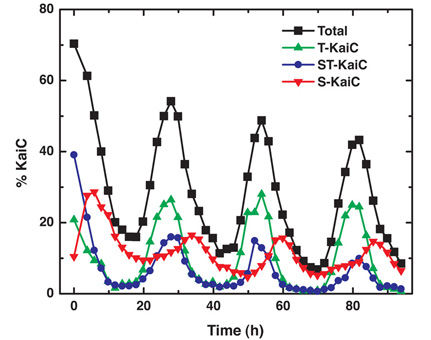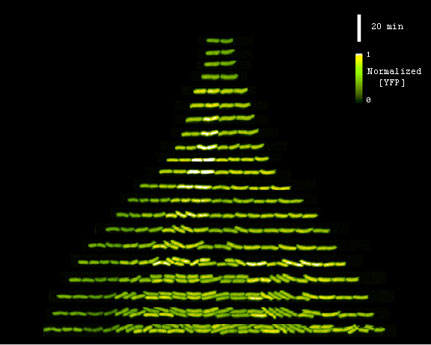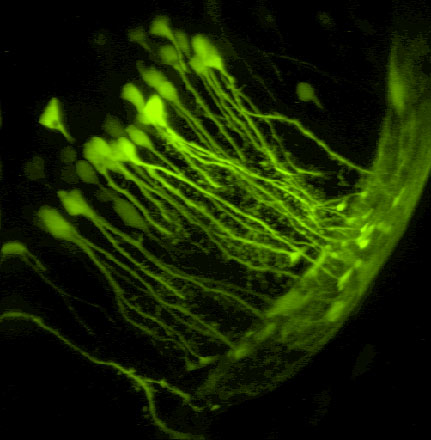AUTOMATED HIGH-DENSITY RECORDING ELECTRODES TO PROBE THE ORGANIZATION OF VISUAL CORTEX
Automated high-density recording electrodes to probe the organization of visual cortex. Each red dot overlaid on a rat brain represents a recording site on a silicon micro-machined electrode array implanted under robotic control. These electrodes allow the activity of visual cortical neurons to be measured, allowing the computational organization of visual processing in cortex to be probed.
Source: Cox Lab





